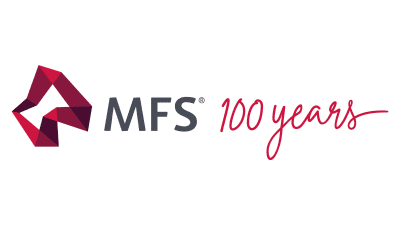Cutting through the super confusion



Catherine Chivers discusses top five advice topics that are likely to be running themes in adviser-client conversations as the financial year draws to a close.
With advisers currently working their way through the maze of new superannuation rules, particularly to help clients meet transfer balance cap (TBC) requirements by 1 July 2017, it is clear there’s tremendous complexity within the new legislative landscape. While there’s no ‘one size fits all’ superannuation strategy available to fully address a client’s circumstances, there are likely to be many questions they raise with similar advice themes as we approach the lead-up to year-end.
Highlighted below are the top five advice themes which are likely to form the basis of many adviser-client conversations as we close out the year:
- What is a TBC – and do I need to do anything about it right now?
- Should I keep my transition to retirement (TTR) income stream?
- How do capital gains tax (CGT) relief work – and what do I need to do?
- Is superannuation a worthwhile investment option post 1 July 2017?
- How will the new superannuation rules impact my estate plan?
Let’s look at the key underlying elements for each advice theme, and some of the frequently asked client questions in each area.
What is a TBC – and do I need to do anything about it right now?
The TBC effectively represents the maximum amount of money that a client will be able to transfer into a ‘retirement income stream’ from 1 July. Importantly, a ‘retirement income stream’ encompasses account-based pensions (ABPs) that have a nil-cashing restriction, but exclude TTR income streams.
Where a client has relevant super interests that either currently exceed the $1.6 million TBC threshold for 2017-18, or will be expected to do so by 30 June 2017, they will need to either move the excess back to accumulation phase or withdraw that amount from the superannuation system.
CGT relief may exist for those commuting funds from a retirement income stream back to accumulation, subject to eligibility criteria being met. Importantly, the decision to seek CGT relief or not will rely on the specific circumstances of the fund – there is no ‘one size fits all’ outcome.
In order to determine the likely quantum of any excess and which assets may need to be moved to accumulation phase/withdrawn, clients should be speaking to their advice professional now to obtain the most suitable advice for their circumstances.
Should I keep my TTR income stream?
For many clients, the answer to this question will be ‘it depends!’.
From 1 July 2017, the impact of the super changes on TTRs will be that:
- They aren’t ‘retirement income streams’ — so, the dollar balance doesn’t count towards the TBC;
- They do count towards total superannuation balance (TSB);
- At fund level they will be taxed at a maximum of 15 per cent/10 per cent (income/capital gains); and
- Pension income from a TTR income stream remains unchanged (e.g. 60+ -0 per cent, Preservation age to 60 – taxed at marginal tax rates less 15 per cent offset).
In terms of specifically whether to keep a TTR income stream running or not, the guiding question for many clients will be whether they need the income or not:
- If there is no need for income – then it may make sense to rollback to accumulation, so that their pension balance isn’t being unduly minimised. Remember, an unlimited amount can be retained within accumulation phase; and
- If there is a need for income, then the options are to keep the TTR as is, or convert to ‘standard’ ABP if another condition of release is met. Remember, if it converts to a ‘standard’ ABP, it then counts towards the TBC.
Ultimately, the decision will depend on a client’s preferred income needs, the investment selection underpinning the income stream, the desired longevity of the fund, plus the ability/desirability of accessing CGT relief.
How does CGT relief work – and what do I need to do?
Transitional CGT relief – a special tax concession accessible between now and 30 June – is available to superannuation funds that have members affected by the new TBC, or pay TTR income streams that will lose the tax-exempt treatment of investment earnings.
Super funds, where part of the fund’s investment return is a capital gain on individual assets, will be impacted by the changes. These funds include self-managed superannuation funds (SMSFs), small Australian Prudential Regulation Authority (APRA) funds (SAFs), and public offer (retail) funds – including wrap accounts – and industry funds offering direct investments, i.e. shares and managed funds.
The CGT relief measure was introduced to discourage the mass selling of pension-supporting investments before 1 July 2017. The intent of the new rule is to provide CGT relief on the gains accrued before that date, so as not to disadvantage members who are required to commute a pension due to the new TBC, or are impacted by the TTR income stream (TRIS) tax changes. CGT relief preserves the tax exemption for these accrued capital gains on selected investments by resetting the cost base of those investments to their market value.
For members who currently have more than $1.6 million in pension phase or have a TRIS, the legislation provides transitional CGT relief for assets owned by the fund on 9 November 2016 (being the date the legislation entered Parliament).
Importantly, CGT relief is not automatic – the trustee of a super fund must choose for the relief to apply for a CGT asset in the approved form.
For those assets that become taxable, i.e. that are transferred back to accumulation phase or support a TRIS, an irrevocable election can be made on an asset-by-asset basis to reset the CGT cost base to its market value, with the fund deemed to have sold and re-purchased the asset at that market value. This means the fund is only exposed to CGT on future growth in the asset value from that point.
CGT relief is quite complicated where different rules apply depending on whether the fund currently uses the segregated or proportionate (unsegregated) method in determining its exempt current pension income (ECPI).
Furthermore, from 1 July 2017, SMSFs and SAFs in some circumstances will no longer be able to use the segregated method in determining the ECPI.
Due to its inherent complexity, specific tax advice should always be sought by a client on whether to elect to receive CGT relief, or not.
Finally, it is important to be aware of Part IVA general anti-avoidance measures in ITAA1936 that may arise as a result of structuring a client’s affairs to receive the CGT relief measures.
While many clients seem aware at a high-level that Part IVA can be offended where a taxpayer enters into a scheme for the sole or dominant purpose of obtaining a tax benefit, less may know that where controversy occurs, onus is on the taxpayer (e.g. trustee/s) to meet the required burden of proof. That is, where the Commissioner of Taxation is disputing that the trustee is seeking CGT relief appropriately, they will be required to prove that this is the case. Therefore, accurate and contemporaneous record keeping is key.
Both the Explanatory Memorandum underpinning the superannuation changes and recent ATO media releases provide clear warnings in this regard about accessing CGT relief – so it is likely that controversy in 2016-17 and beyond could accelerate significantly.
Is superannuation a worthwhile investment option post 1 July 2017?
Essentially, yes. Aside from its concessional tax treatment, superannuation can also be a useful vehicle because of the:
- Statutory protection from an asset protection standpoint (that is, where the contributions were not made to defeat or hinder a creditor, or are otherwise considered to be ‘out of character’);
- Estate planning benefits, principally due to the associated tax advantages of a tax law dependant receiving a death benefit payment, and also the downstream strategic benefits that may arise due to superannuation being a non-estate asset (important note: any opportunities may be limited for clients impacted by the NSW Succession Act 2006 concept of ‘notional estate’);
- Succession planning advantages, particularly due to SMSFs having ‘perpetual’ succession; and
- The ability to hold personal risk insurance policies, which can be especially helpful in freeing up a client’s personal cash flow.
How will the new superannuation rules impact my estate plan?
In essence, any adult recipient of a death benefit income stream payment will have this assessed against their TBC. However, the mechanics of how this operates will depend on the nature of the benefit received, that is, whether it is of a ‘reversionary’ or ‘non-reversionary’ nature.
There are time limits involved in some cases, so clients will certainly need assistance with managing their affairs from an estate planning perspective more than ever before.
Reversionary income stream
- Starting day’ for reversionary beneficiary is date of death (DOD) of primary pensioner (member); and
- Reversionary beneficiary’s transfer balance account (TBA) is credited as shown in the table below:
A reversionary beneficiary has 12 months to receive advice and arrange their affairs, prior to the credit appearing in their TBA.
Important note: the tax treatment of a capped defined benefit income stream is not delayed by this same timeframe.
Non-reversionary income stream
- ‘Starting day’ for a non-reversionary beneficiary is the date they are entitled to receive the income stream payment following the death of the primary pensioner (member); and
- Non-reversionary beneficiary’s TBA is credited of an amount equal to that of the commencement value on the ‘starting day’.
For a child pension recipient, the impact on their TBC is as shown in the table below:
Note: a child recipient will generally be required to cash-out this benefit by a maximum of age 25, unless they meet the definition of ‘disabled’ under section 8(1) of the Disability Services Act 1986 (Cth).
Catherine Chivers is the manager, strategic advice at Fordham, part of Perpetual Private.
Recommended for you
In the latest edition of Ahead of the Curve in partnership with MFS Investment Management, senior managing director Benoit Anne explores the benefits of adding global bonds to a portfolio.
While M&A has ramped up nationwide, three advice heads have explored Western Australia’s emergence as a region of interest among medium-sized firms vying for growth opportunities in an increasingly competitive market.
Private wealth firm Escala Partners is seeking to become a leading player in the Australian advice landscape, helped by backing from US player Focus Financial.
In this new series in partnership with MFS Investment Management, delve into all things fixed income and discover how you can use the asset class to build better client portfolios. In this Q&A discussion, MFS managing director- head of wholesale distribution James Langlands sits down with Evidentia senior asset consultant Ron Mehmet to discuss fund selection.









